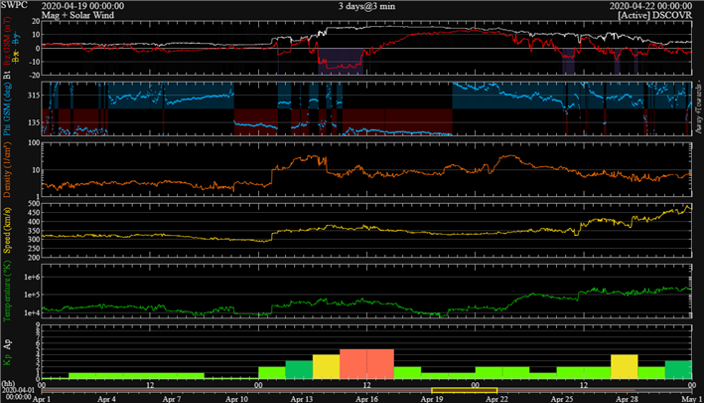The Sun got the space weather forecasters' attention last week when during the afternoon and evening of 14 April almost simultaneously 2 coronal mass ejections (CMEs) became visible in STEREO-A imagery, one at the east limb and one at the west limb. Due to a large datagap in SOHO/LASCO imagery from about 15 till 24UT, only the final stages of these CMEs could be seen in SOHO's coronagraphic imagery early on 15 April. However, also here, there was one at the east limb and a weak CME at the west-north west limb. This can be seen in the images underneath, with top: STEREO-A, and bottom: SOHO. This meant that one CME was on the farside of the Sun (the one which was at the east limb for both SOHO and STEREO-A), and one was on the earth-facing side (the "west" CME). But was this "west" CME also truly directed to Earth?
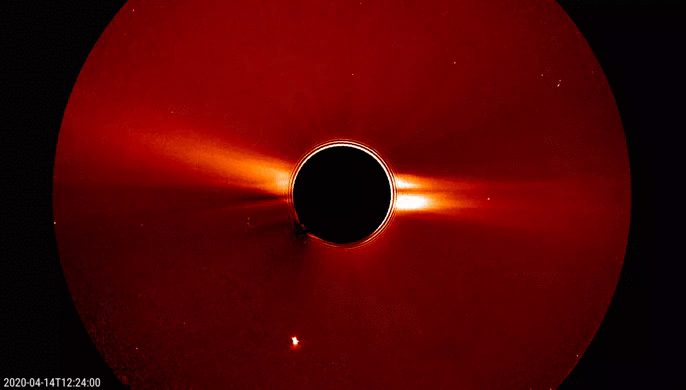
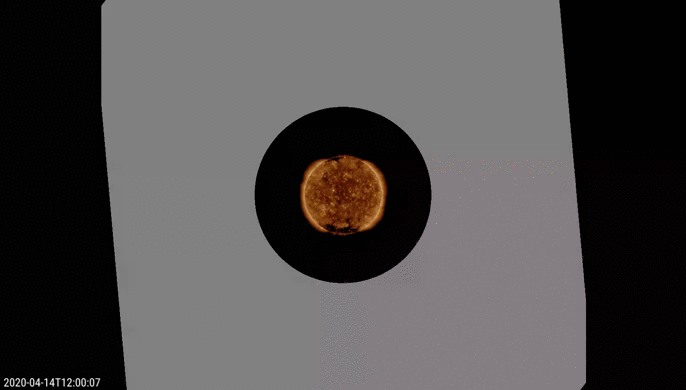
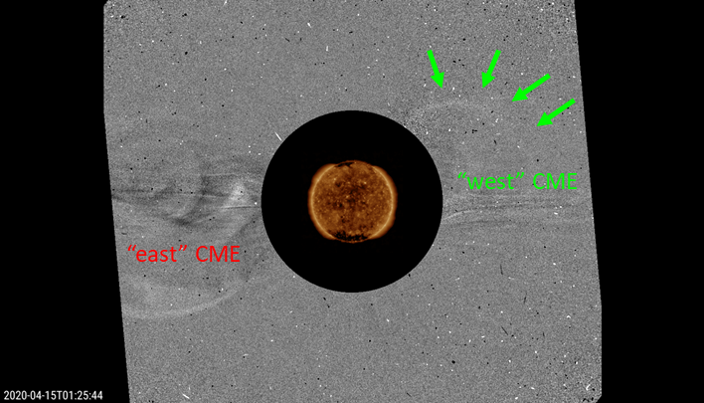
In extreme ultraviolet (EUV) imagery taken by both satellites, no obvious on-disk source could be found for the two CMEs. There was the daily dynamics in the solar atmosphere, and a small reconnection event near the border of the southern polar coronal hole between 19-21UT, but nothing out of the ordinary. With the usual suspects (coronal dimming, post-eruption coronal loops) lacking, forecasters turned to their models combining coronagraphic imagery from both STEREO-A and SOHO to get a more accurate idea on the propagation of this CME. Applying StereoCat (a NASA/GSFC model - https://ccmc.gsfc.nasa.gov/analysis/stereo/ - see underneath for a screenshot) on the limited available imagery (there was also a datagap in STEREO-A images from 07-21UT on 15 April...), it was determined that this weak CME had a width of about 44 degrees, a longitude of about 25 degrees, and a slow speed somewhere between 150 and 200 km/s. This meant the CME was not earth-directed, but being such a weak event, the possible interaction with coronal hole wind streams, and with all the datagaps, it was still a close call whether or not it had an earth-directed component. But even if Earth would suffer a glancing blow (somewhere around 20 April), this weak CME would not stir much of geomagnetic activity, right? Nothing worth to mention, or so it seemed.
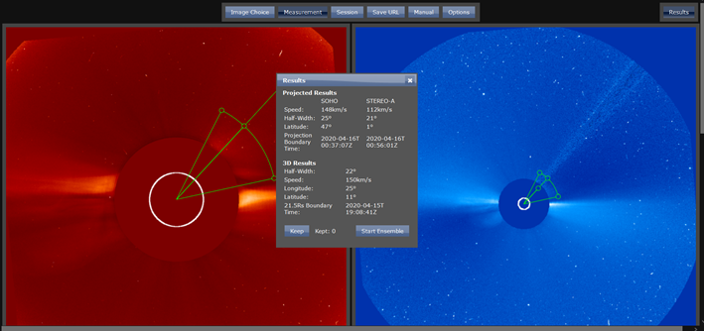
Solar wind parameters had been very low the days prior to 20 April, with the solar wind speed (yellow curve in chart underneath) even occasionally dropping below 300 km/s. Geomagnetic activity was obviously at quiet levels. Then, at 01:30UT on 20 April (DSCOVR), a shock was observed with solar wind speed jumping from 296 to 333 km/s. Bz (red curve), indicating the north- or southward orientation of the magnetic field, first oscillated somewhat until around 06:30UT, before turning strongly southward (negative) reaching -15 nT (!) during a 4-hour period (07-11UT). Wind speed then reached a maximum near 380 km/s, Bz turned to positive values, and all magnetic parameters showed a smooth rotation. The entire evolution was a clear indication of an interplanetary CME passing the earth environment, most likely the "west" CME from 14-15 April. Geomagnetic activity picked up under the influence of this unexpectedly strong disturbance, and reached minor storming levels (Kp=5) during the 09-12 and 12-15UT intervals. This was the first geomagnetic storm since 18-19 February 2020. The storm before that, on 25-26 October 2019, even reached moderate geomagnetic conditions (Kp=6). No doubt this solar event is going to be the topic of discussion at many future space weather conferences.
